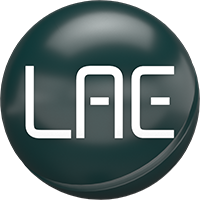Have your CPU ever ran out of juice on a large session?
One of my favorite tips for an effective session is to set up some bus routing. Busses will help organize your session by group instruments and effects.
In this short video, you’ll learn how to set up bus tracks in Logic Pro X to help save your CPU in larger sessions.
Busses are a great way of managing groups of instruments. They allow you to add effects and process everything in the bus group all together, and they also save CPU space because you don’t have to apply the processing to each track individually.
A Bus is an auxiliary track. A track that doesn’t have anything recorded on it, but can be used to send multiple tracks thru the same channel. A bus track has inputs and outputs just like an audio track, and is used as an extra stop on the way to the stereo output. For example, If you want some arena reverb on your drums, sounds like it’s time for a field trip. But how are you gonna get there? You could load up an instance of space designer on every track in your drum group, but then your stuck tweaking every plugin, and your CPU has to process like 8 different Reverbs.
This is not a good use of resources, think of it like every single track took it’s own car to arrive at the same destination. So instead, all of your drums can take the bus, and that bus will take all your drums together to pick up the sweet arena reverb. This makes busses act as a sort of carpool lane, less cars on the road, everything moves faster. How deep you go into bussing it up to you. You make just make a buss group for your recorded drums, maybe one for your BG vocals, your guitars, your synths, and before you know it you’re brauerizing your mix by separating instruments into frequency groups.
There are 2 basic directions to a bus, Send and return. When you select a bus on your audio track, your are choosing to SEND that track to a destination and it will RETURN with the processing from the destination.once you’ve selected a bus input, logic will create a bus track automatically that you can name.
Once this is set up, you can dial in the AMOUNT you want to send to the bus, Do you want a little reverb? or a lot? This is known as the wet/dry blend, and is one of the benefits of using busses. It is important to keep the mix at 100% wet when using busses as you can control the amount of wet with the send amount knob. This will result in the wet signal from your reverb bus being blended together with the Dry signal from your instrument tracks. Now you can send as many tracks as you like to the reverb while only using a single plugin! This is called parallel processing.
If you instead, want your track to always be 100% wet, I’d recommend setting the output of your audio tracks that bus. Which is commonly done when grouping tracks onto a single fader.




